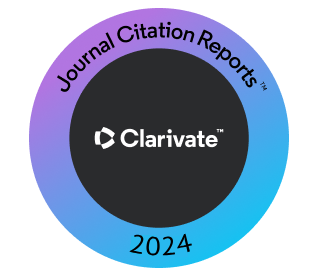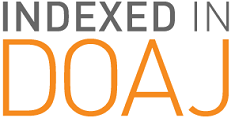Predictive Logistic Models for Off-Street Parking Policy
Controlling Traffic Volume and Movement
Abstract
The land in city centers is typically used for commercial and industrial purposes, leading to increased traffic congestion. To promote more efficient, sustainable, and accessible land use in city centers, it is necessary to manage incoming traffic flow and travel demands effectively. This can be achieved by implementing appropriate parking policies, which should be predicted carefully to avoid adverse effects on human and economic activities. A case study is conducted in Duhok city, Iraq, aims to estimate the potential responses of city center travelers to reasonable off-street parking restriction policies. Real data were gathered through interviews with a quantitative sample of drivers to assess their reactions to two policies: increasing parking fees and reducing available parking spaces. The study examines central parkers’ socio-demographic and travel characteristics, including origin, trip purpose, timing, parking duration, search time, payment, income, age, and car occupancy. The study presents the results of two binary logistic models used to estimate the probability of implementing new parking policies to alleviate traffic congestion and improve movement. The findings suggest that travelers are more inclined to change their mode of transportation or travel time of day rather than altering their destination or canceling their trip. The findings contribute to the ongoing discourse on sustainable urban development and offer practical solutions for addressing the complex challenges associated with traffic volume and movement control in developing cities. This study aims to contribute to the growing body of knowledge on sustainable urban transportation planning and offer practical recommendations for transportation authorities.
Downloads
References
Abaza, K.A., 2021. Optimal novel approach for estimating the pavement transition probabilities used in Markovian prediction models. International Journal of Pavement Engineering, 23, 8.
Abdullah, P.H., 2013. The Development of a Trip Assignment Algorithm to Improve Traffic Flow in Duhok City. M.Sc. Thesis Submitted to the Faculty of Engineering and Applying Science, University of Duhok, Duhok, Iraq.
Al-Ani, N., 2021. Study of Strategic Plan to Establish a Bus Transportation System in Duhok City Using ITSAs. M.Sc. Thesis, Technical College of Engineering, Duhok Polytechnic University, Kurdistan Region, Iraq.
Alaswadko, N., 2016. Deterioration Modelling of Granular Pavements for Rural Arterial Roads. Thesis (PhD). Swinburne University of Technology, Melbourne, Australia.
Alaswadko, N., Hassan, R., Meyer, D., and Mohammed, B., 2019. Probabilistic prediction models for crack initiation and progression of spray sealed pavements. International Journal of Pavement Engineering, 20(1), pp.1-11.
Alaswadko, N.H., 2017. Prediction modelling approach for crack progression of heavy duty flexible pavements. Journal of Duhok University, 20(1), pp.307-318.
Aros-Vera, F., Marianov, V., and Mitchell J.E., 2013. P-hub approach for the optimal park-and-ride facility location problem. European Journal of Operational Research, 226, pp.277-285.
Aswad, N.H., 2003. Parking Characteristics Study and their Effect in Dohuk City Center. In: M.Sc. Thesis Submitted to College of Engineering, University of Salahaddin, Erbil, Iraq.
Chen, X., Yin, R., An, Q., and Zhang, Y., 2021. Modeling a distance-based preferential fare scheme for park-and-ride services in a multimodal transport network. Sustainability, 13, p.2644.
Dijk, M., and Parkhurst, G., 2014. Understanding the mobility transformative qualities of urban park and ride polices in the UK and the Netherlands. International Journal of Automotive Technology and Management, 14(3/4), pp.246-270.
Ding, L., and Yang, X., 2020. The response of urban travel mode choice to parking fees considering travel time variability. Advances in Civil Engineering Journal, 2020, p.8969202
Dowling, C., Fiez, T., Ratliff, L., and Zhang, B., 2017. How much urban traffic is searching for parking? In: Computers and Society. Oxford University Press, Oxford.
Fahmy, A., Nazareth, F., and Dyck, M., 2021. Parking Policy for Sustainable, Accessible Communities. University of British Columbia, Social Ecological Economic Development Studies (SE EDS) Sustainability Program, April 2021.
Franco, S.F., 2017. Downtown parking supply, work-trip mode choice and urban spatial structure. Transportation Research Part B Methodological, 101, pp.107-122.
Gallo, M., D’Acierno, L., and Montella, B., 2011. Amultilayer model to simulate cruising for parking in urban areas. Transport Policy, 18, pp.735-744.
Goulias, K., Davis, A.W., Lee, J., Lundberg, A., and Mcbride, E., 2016. Behavioural micro-dynamics of car ownership and travel in the Seattle metropolitan region from 1989 to 2002. European Journal of Transport and Infrastructure Research, 16(4), pp.735-753.
Guo, Z., 2013. Does residential parking supply affect household car ownership? the case of new york city. Journal of Transport Geography, 26(1), pp.18-28.
Habib, K., Mahmoud, M., and Coleman J., 2013. Effect of parking charges at transit stations on park-and-ride mode choice: Lessons learned from stated preference survey in Greater Vancouver, Canada. Transportation Research Record: Journal of the Transportation Research Board, 2351(1), pp.163-170.
Hosmer, D.W., and Lemeshow, S., 2013. Applied Logistic Regression. 3rd ed. Wiley, New York, Hoboken.
Huang, K., Liu, Z., Zhu, T., Kim, I., and An, K., 2019. Analysis of the acceptance of park-and-ride by users: A cumulative logistic regression approach. Journal of Transport and Land Use, 12, pp.637-647.
Justo-Silva, R., Ferreira, A., and Flintsch, G., 2021. Review on machine learning techniques for developing pavement performance prediction models. Sustainability (Switzerland), 13, p.5248.
Khalid, S.W., 2011. Characteristics and Performance of Public Transit Bus in Duhok City. In: M.Sc. Thesis Submitted to College of Engineering, University of Salahaddin, Erbil, Iraq.
Kim, S., Tak, Y., Barmpounakis, M., and Geroliminis, N., 2024. Monitoring Outdoor Parking in Urban Areas with Unmanned Aerial Vehicles. IEEE Transactions on Intelligent Transportation Systems, 99, pp1-14.
Manville, M., and Shoup, D., 2005. Parking, people, and cities. Journal of Planning and Development, 131, pp.233-245.
Meek, S., Ison, S., and Enoch, M., 2008. Role of bus-based park and ride in the UK: A temporal and evaluative review. Transport Reviews, 28(6), pp.781-803.
Mei, Z., Lou, Q., Zhang, W., Zhang, L., and Shi, F., 2017. Modelling the effects of parking charge and supply policy using system dynamics method. Journal of Advanced Transportation, 2017, p.6463586.
Moeinaddinia, M., Asadi-Shekaria, Z., Ismailb, C.R., and Shaha, M.Z., 2013. A practical method for evaluating parking area level of service. Land Use Policy, 33, pp.1-10.
Molan, V., and Simićević, J., 2018. Park-and-ride system: Urban parking management policy. International Journal for Traffic and Transport Engineering, 8(4), pp.426-445.
Nieuwkoop, R., Axhausen, K.W., and Rutherford, T.F., 2016. Atraffic equilibrium model with paid-parking search. Journal of Transport Economics and Policy (JTEP), 50, pp.262-286.
Ortega, J., Tóth, J., and Péter, T., 2021. Planning a park and ride system: A literature review. Future Transp, 1, pp.82-98.
Patel, A., Tiwari, V., Ojha, M., and Vyas, O.P., 2023. Ontology-based detection and identification of complex event of illegal parking using SPARQL and description logic queries. Chaos, Solitons and Fractals, 174, pp.113774.
Shen, X., Chen, F., Su1, B., Che Q., and Ya, J., 2017. Optimization of parkand-ride system: A case study of Shunyi in Beijing. Advances in Mechanical Engineering, 9(8), pp.1-8.
Shiftan, Y., and Burd-Eden, R., 2001. Modeling the response to parking policy. Journal of Transportation of Research Record, 1765(1), pp.27-34.
Shoup, D., 2005. The High Cost of Free Parking. The American Planning Association, Planners Press, Chicago. Shoup, D., 2018. Parking and the City. Routledge, New York.
Shoup, D., 2024. Parking benefit districts. Journal of Planning Education and Research, 44(4), pp.2154-2166.
Shtayat, A., Moridpour, S., Best, B., Rumi, S., 2022. An overview of pavement degradation prediction models. Journal of Advanced Transportation, 2022, p.7783588.
SPSS, 2023. IBM SPSS Statistics for Windows. Version 25.0. IBM Corp, Armonk, NY. SSC, 2023. Sample Size Calculator. Available from: https://www.surveysystem. com/sscalc.htm [Last accessed on 2023 Oct 15].
Syed, S., Golub, A., and Deakin, E., 2009. Response of regional rail park-andride users to parking price changes: System wide results and a detailed study of two stations. Transportation Research Record: Journal of the Transportation Research Board, 2110, pp.155-162.
Wang, H., Zhu, S., Long, Z., Chen, M., and Gao, R., 2024. Reducing Traffic Congestion through Parking Pricing Policy: A System Dynamics Simulation.
Wuensch, K.L., 2014. Binary Logistic Regression with SPSS. Available from: https://core.ecu.edu/psyc/wuenschk/mv/multreg/logistic-spss.pdf [Last accessed on 2023 Oct 21].
Yan, X., Levine, J., and Marans, R., 2018. The effectiveness of parking policies to reduce parking demand pressure and car use. Transport Policy Journal, 73, pp.41-50.
Yoka, R., 2018. Shoup’s Parking and the City Highlights Parking Reform. International Parking and Mobility Institute. Available from: https://www. parking-mobility.org [Last accessed on 2024 Dec 20].
Zhang, L., Wang, Y.P., and Sun J., 2016. The sightseeing bus schedule optimization under park and ride system in tourist attractions. Annals of Operations Research, 273, pp.587-605.
Zhang, R., Wang, L.P., and Yan, Z.B., 2009. Park-and-ride demand analysis and parking pricing: A case study of shanghai in rail transit park-and-ride operation. Urban Transport of China, 2, pp.13-
Copyright (c) 2025 Nahla H. Alaswadko

This work is licensed under a Creative Commons Attribution-NonCommercial-ShareAlike 4.0 International License.
Authors who choose to publish their work with Aro agree to the following terms:
-
Authors retain the copyright to their work and grant the journal the right of first publication. The work is simultaneously licensed under a Creative Commons Attribution License [CC BY-NC-SA 4.0]. This license allows others to share the work with an acknowledgement of the work's authorship and initial publication in this journal.
-
Authors have the freedom to enter into separate agreements for the non-exclusive distribution of the journal's published version of the work. This includes options such as posting it to an institutional repository or publishing it in a book, as long as proper acknowledgement is given to its initial publication in this journal.
-
Authors are encouraged to share and post their work online, including in institutional repositories or on their personal websites, both prior to and during the submission process. This practice can lead to productive exchanges and increase the visibility and citation of the published work.
By agreeing to these terms, authors acknowledge the importance of open access and the benefits it brings to the scholarly community.













 ARO Journal is a scientific, peer-reviewed, periodical, and OAJ that has no APC or ASC.
ARO Journal is a scientific, peer-reviewed, periodical, and OAJ that has no APC or ASC.